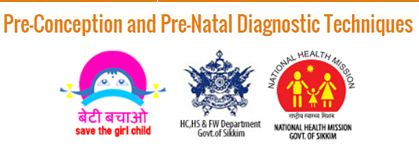
- Home › IPHS Guidelines for District Hospital
IPHS Guidelines for District Hospital
Introduction
India’s Public Health System has been developed over the years as a 3-tier system, namely primary, secondary and tertiary level of health care. District Health System is the fundamental basis for implementing various health policies, delivery of healthcare and management of health services for defined geographic area. District hospital is an essential component of the district health system and functions as a secondary level of health care which provides curative, preventive and promotive healthcare services to the people in the district. Every district is expected to have a district hospital linked with the public hospitals/health centres down below the district such as Sub-district/Sub-divisional
hospitals, Community Health Centres, Primary Health Centres and Sub-centres. However, at present there are 605 district hospitals in 640 districts of the country as per NRHM data as on 30-6-2010. The Government of India is strongly committed to strengthen the health sector for improving the health status of the population. A number of steps have been taken to that effect in the post independence era. One such step is strengthening of referral services and provision of speciality services at district and sub-district hospitals. Various specialists like surgeon,
physician, obstetrician and gynaecologist, paediatrician, orthopaedic surgeon, ophthalmologist, anaesthetist, ENT specialist and dentist have been placed in the district headquarter hospital.
The district hospitals cater to the people living in urban (district headquarters town and adjoining areas) and the rural people in the district. District hospital system is required to work not only as a curative centre but at the same time should be able to build interface with the institutions external to it including those controlled by non-government and private voluntary health organizations. In the fast changing scenario, the objectives of a district hospital need to unify scientific thought with practical operations which aim to integrate management techniques, interpersonal behaviour and decision making models to serve the system and improve its efficiency and effectiveness. By establishing a telemedicine link with district to referral hospital (Medical College) with video-conferencing facility (desirable), the quality of secondary and limited tertiary care can be improved considerably at district hospitals.
The current functioning of the most of the district hospitals in the public sector are not up to the expectation especially in relation to availability, accessibility and quality. The staff strength, beds strength, equipment supply, service availability and population coverage are not uniform among all the district hospitals. As per Census 2001, the population of a district varies from as low as 32,000 (Yanam in Pondicherry, Lahaul & Spiti in Himachal Pradesh) to as high as 30 lakhs (Ludhiana, Amritsar districts). The bed strength also varies from 75 to 500 beds depending on the size, terrain and population of the district. The second phase of the facility survey undertaken by the Ministry of Health & Family Welfare, Government of India, covering 370 district hospitals from 26 states has revealed that 59% of the surveyed district hospitals have tap water facility; the electricity facility is available in 97% of the districts with a stand by generator facility in 92% of the cases. Almost all the District Hospitals in India have one operation theatre and 48% of them have an OT specifically for gynaecological purpose. About 73% of the surveyed district hospitals have laboratories. A separate aseptic labour room is found in only 45% of the surveyed district hospitals. Only half of the total numbers of district hospitals have OPD facility for RTI/ STI. As regards manpower 10% of the district hospitals do not have O&G specialists and paediatricians. 80% of the District Hospitals have at least one pathologist and 83% at least one anaesthetist. General duty Medical officers, staff nurses, female health workers and laboratory technicians are available in almost all district hospitals. Only 68% of the district hospitals have linkage with the district blood banks.
Most of the district hospitals suffer from large number
of constraints such as:
- Buildings are either very old and in dilapidated conditions or are not maintained properly, because of lack of convergence with maintenance department.
- The facilities at district hospitals require continued upgradation to keep pace with the advances in medical knowledge, diagnostic procedures, storage and retrieval of information. It has been observed that development of hospitals is not keeping pace with the scientific development.
- A typical district hospital lacks modern diagnostics and therapeutic equipment, proper emergency services, intensive care units, essential pharmaceuticals and supplies, referral support and resources.
- There is a lack of trained and qualified staff for hospital management and for the management of other ancillary and supportive services viz. medical records, central sterilization department, laundry, house keeping, dietary and management of nursing services.
- There is lack of community participation and ownership, management and accountability of district hospitals through hospital management committees.
For more details please download the file from the given link
Downloadable Link
Quick Navigation
Other Important Links
Contact Us
National Health Mission, Sikkim
Health & Family Welfare Department,
Tashiling, Secretariat,
Sikkim, India
Email: mdnrhmsikkim@gmail.com
Phone: 3592205439
Terms & Conditions |Privacy Policy |Copyright Policy |Hyperlink Policy
Copyright © 2025 National Health Mission, Sikkim. All Rights Reserved.
Page last updated on : 19/12/2025








